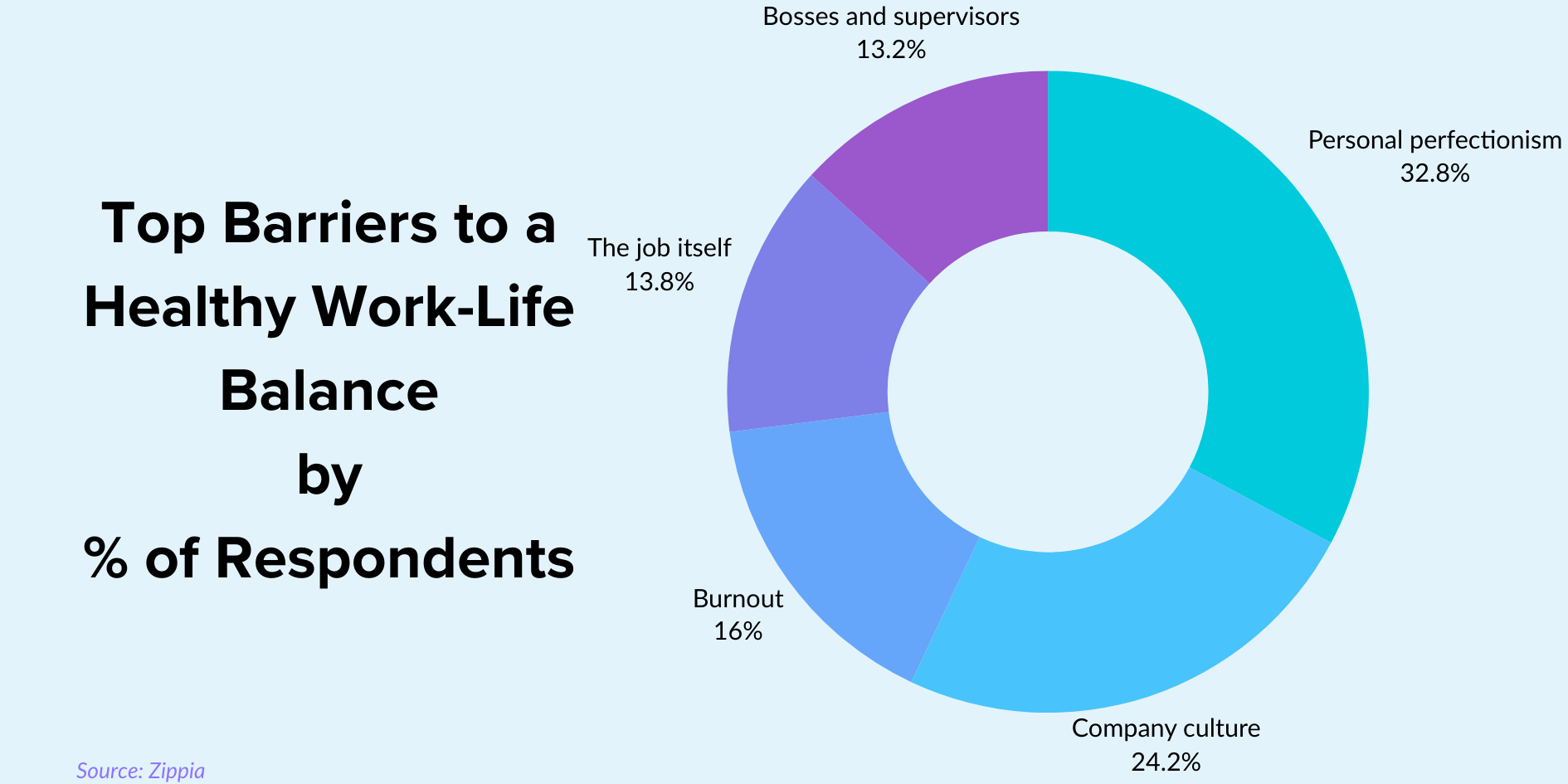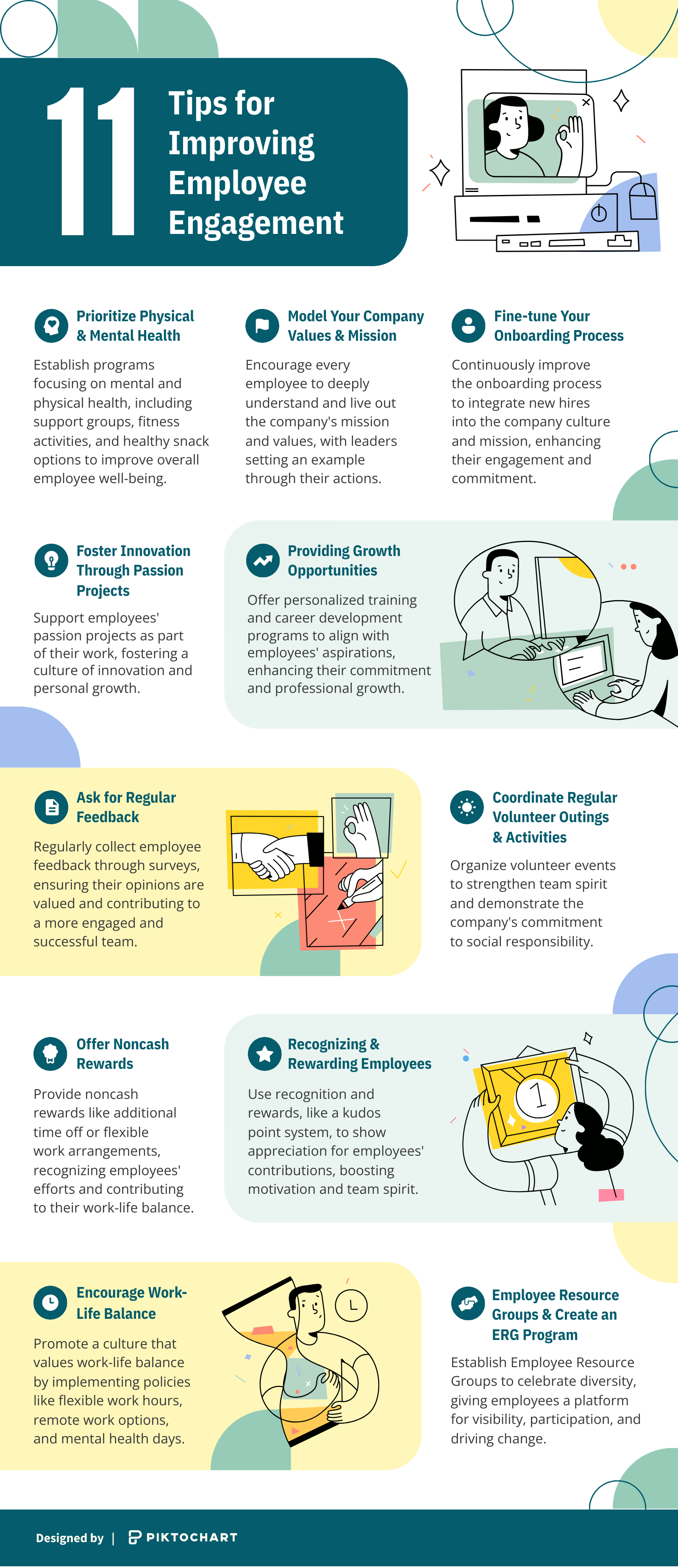How to Foster Employee Engagement Through Work-Life Harmony Trends
Author and speaker on mindfulness in daily life.

Author and speaker on mindfulness in daily life.

— in Productivity
— in Wellness
— in Mental Health
— in Productivity
— in Productivity
Employee engagement is the emotional commitment an employee has to the organization and its goals. This means engaged employees care about their work and their company.
They don't work just for a paycheck, or just for the next promotion, but work on behalf of the organization's goals. Engaged employees are enthusiastic, involved, and committed to their work, driving innovation and moving the organization forward.
Work-life harmony is an approach that acknowledges the interconnectedness of work and personal life. It suggests that both aspects can coexist peacefully and even enhance each other.
Instead of viewing work and life as separate entities in constant competition, harmony focuses on integrating them in a way that is fulfilling and sustainable. It is about having a sense of control and fulfillment in both areas.
Work-life balance implies an equal distribution of time and effort between work and personal life. Work-life harmony, on the other hand, suggests a more flexible and integrated approach.
Work-life balance often suggests a trade-off, where success in one area means sacrificing the other. Harmony, however, acknowledges that the relationship between work and life is dynamic and can change daily based on individual needs and priorities.

Companies are increasingly recognizing the importance of putting their employees first. A people-first culture prioritizes employee well-being, development, and satisfaction.
This approach fosters a positive work environment where employees feel valued and respected. This shift is driven by the understanding that happy and engaged employees are more productive and loyal.
Flexibility has become a key factor in employee engagement. Employees are seeking roles that offer flexible work arrangements, such as remote work and flexible hours.
This trend is driven by the desire for better work-life harmony. Companies that offer flexibility are seen as more attractive and are better able to retain top talent.
Remote work and flexible hours are effective strategies for boosting employee engagement. These arrangements allow employees to tailor their work schedules to their personal needs.
This can lead to reduced stress, increased job satisfaction, and improved productivity. Employers benefit from a more engaged and motivated workforce, reduced overhead costs, and access to a wider talent pool.
Technology and AI are playing a significant role in enhancing employee engagement. Tools like cloud-based collaboration platforms, AI-driven feedback systems, and virtual reality training programs are being used to improve communication.
These technologies help in creating a more connected and engaging work environment. They also provide valuable insights into employee sentiment and performance.
Cloud-based tools have become essential for remote collaboration. Platforms like Slack, Microsoft Teams, and Zoom enable seamless communication and collaboration among remote teams.
These tools facilitate real-time interaction, file sharing, and project management. This makes it easier for teams to stay connected and productive regardless of their location.
Diversity and inclusion (D&I) are crucial for creating an engaging workplace. A diverse workforce brings a variety of perspectives and ideas, fostering innovation and creativity.
Inclusion ensures that all employees feel valued and respected, regardless of their background. Companies with strong D&I initiatives often report higher levels of employee engagement and satisfaction.
Clear communication is the cornerstone of employee engagement. Organizations must ensure that information flows freely and transparently between management and employees.
Regular updates, town hall meetings, and newsletters can help keep employees informed. This fosters a sense of trust and involvement.
Feedback is essential for employee growth and engagement. Regular feedback sessions, both formal and informal, provide employees with insights into their performance and areas for improvement.
Open dialogue encourages employees to share their ideas and concerns. This creates a culture of continuous improvement and mutual respect.
Recognition is a powerful motivator. Acknowledging and appreciating employees' contributions boosts morale and reinforces positive behaviors.
A culture of recognition can be fostered through various means. For example, you could use employee of the month awards, shout-outs in team meetings, and public acknowledgment of achievements.
Peer-to-peer recognition programs empower employees to appreciate each other's efforts. These programs can be facilitated through platforms that allow employees to give kudos or points to their colleagues.
Such initiatives foster a sense of camaraderie and teamwork. They also highlight the value of everyday contributions that might otherwise go unnoticed.
Employee wellness is integral to engagement. Supporting employees' physical and mental health demonstrates that the company cares about their well-being.
Wellness initiatives can include gym memberships, mental health resources, and stress management workshops. These programs help employees stay healthy and focused.
Integrating wellness programs into the work culture can have numerous benefits. Healthy employees are generally more productive, have higher morale, and take fewer sick days.
Wellness programs also contribute to a positive work environment. They show that the company values its employees' health and happiness.

Work-life harmony allows employees to manage their energy and focus more effectively. When individuals have time for personal pursuits and relaxation, they return to work refreshed and motivated.
This balance helps prevent burnout. It ensures that employees can consistently perform at their best.
A harmonious balance between work and personal life can significantly reduce stress levels. Employees who feel in control of their schedules and responsibilities are less likely to experience work-related stress.
Reduced stress leads to improved mental health. It fosters a more positive outlook and greater job satisfaction.
Work-life harmony positively impacts team dynamics. When team members are less stressed and more satisfied, they are likely to collaborate more effectively.
A supportive environment where everyone's well-being is prioritized fosters trust and cooperation. This leads to better team performance and cohesion.
Implementing flexible work policies is a crucial step in creating a culture of work-life harmony. These policies can include options for remote work, flexible hours, and compressed workweeks.
Such flexibility allows employees to better manage their personal and professional lives. It also demonstrates trust and respect for individual needs.
Encouraging employees to take time off, including mental health days, is essential. Time off allows employees to recharge and return to work with renewed energy.
Promoting mental health days normalizes the importance of mental well-being. It also helps reduce the stigma associated with seeking help for mental health issues.
A supportive management approach is vital for fostering work-life harmony. Managers should be trained to understand and accommodate the diverse needs of their team members.
This includes being open to flexible work arrangements. It also means providing support for employees facing personal challenges.
Understanding individual employee needs is key to creating a supportive work environment. Managers should take the time to get to know their team members and their unique circumstances.
This understanding allows managers to tailor their support. It ensures that each employee feels valued and respected.

In 2024, key trends in employee engagement include a shift towards a people-first culture, emphasis on flexibility and work-life harmony, increased use of technology and AI, and the importance of diversity and inclusion. Strategies for achieving employee engagement involve establishing clear communication channels, fostering a culture of recognition, and supporting employee wellness initiatives.
The future of work will likely see an even greater emphasis on work-life harmony and employee engagement. As companies recognize the benefits of a balanced and engaged workforce, they will continue to implement policies and practices that support these goals.
Technology will play an increasingly important role in facilitating flexibility and connection. The focus will be on creating work environments where employees can thrive both professionally and personally.
Key Takeaways: